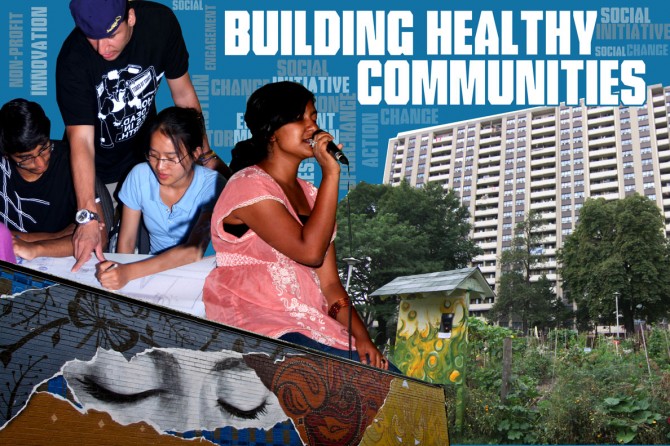The AccèsLogis Québec Program: 15 years of Partnership Between the State and the Social Economy
Keywords:
housing, partnerships, non-profit, solidarity economyAbstract
Over the past 15 years, the Quebec government’s public policy on social and community housing has been based mainly on the AccèsLogis program. Under this program, some 23,000 new social housing units have been developed. While the program’s regulations and funding are governed by the public sector (primarily provincial, secondarily federal), its development and implementation rely heavily on the participation of social and solidarity economy (SSE) stakeholders, and particularly on the input of housing Non Profit Organizations (NPOs) and co operatives. In other words, SSE stakeholders play a significant role in program implementation (co-production) and in its definition and design (co-construction), to use a distinction favoured in this paper’s conceptual framework (Vaillancourt, 2009). This appraisal of the AccèsLogis program is based on research that was mostly done in partnerships since 1995. Our paper is divided into two parts: first, we present the context in which the AccèsLogis program emerged, along with its main characteristics; then we show that the program represents a social innovation in which SSE stakeholders make a major contribution while participating not only in the implementation of the program (co-production), but also in defining its architecture (co-construction). En matière d’habitation sociale et communautaire, la politique publique du gouvernement du Québec, au cours des quinze dernières années, s’est principalement appuyée sur le programme AccèsLogis. Ce programme, conçu en 1996 et lancé en 1997, a permis de développer près de 23 000 nouvelles unités de logement social. Même si la régulation et le financement du programme relèvent du secteur public (principalement provincial et secondairement fédéral), son développement et sa mise en œuvre misent fortement sur la participation des acteurs de l’économie sociale et solidaire (ESS), notamment sur l’apport des OSBL et des coopératives d’habitation. En d’autres termes, les acteurs de l’ESS assument un rôle important non seulement sur le plan de la mise en oeuvre (co-production) du programme, mais aussi sur le plan de sa définition et de son orientation (co-construction), pour reprendre une distinction que nous privilégions dans notre cadre conceptuel (Vaillancourt, 2009). En nous appuyant sur des résultats de recherches, le plus souvent partenariales, menées depuis 1995, nous présentons un bilan du programme AccèsLogis. Nous le faisons en mettant en lumière la contribution de l’ESS et les relations partenariales qui se sont instaurées entre l’ESS et le secteur public. Il en ressort un portrait globalement positif, mais non exempt de quelques zones d’ombre. La structure de notre texte repose sur deux grandes parties. Dans une première partie, sur un registre plutôt descriptif, nous présentons le contexte d’émergence du programme AccèsLogis et ses principales caractéristiques. Dans une deuxième partie, sur un registre plus analytique, nous faisons ressortir comment le programme AccèsLogis constitue une innovation sociale dans laquelle les acteurs de l’ESS font un apport majeur en participant non seulement à la mise en application du programme (co-production), mais aussi à la définition de son architecture (co-construction).Downloads
Published
How to Cite
Issue
Section
License
1-The author guarantees that the manuscript is an original work not published elsewhere in print or electronically in whole or in part, except in abstract form, that the author has the full power to make this contribution, and that the manuscript contains no matter libelous or otherwise unlawful or which invades the right of privacy or which infringes any proprietary right.
2-The author guarantees that the manuscript has not been previously published in print or electronically and that if the manuscript contains any tables, figures or images fully reproduced or closely adapted from previously published material, the author must obtain the necessary permission from the author/publisher holding the original copyright prior to publication in CRSP. The author may be required to produce evidence of permission granted to CRSP’s editors.
3-As a condition of publication in CRSP, the author assigns all copyright to CRSP, including but not limited to the right to publish, republish, and otherwise distribute this manuscript in print, electronic, or other formats. As CRSP is a non-profit interdisciplinary scholarly journal, the author will receive no royalty or other monetary compensation for the assignment set forth in this agreement.
For the purpose of full disclosure, CRSP will not normally use the content provided by the author in a commercial venture, but for the purpose of disseminating the author’s content to as many readers as possible. For distribution, third parties engaging in commercial activities may be contracted to distribute the content globally, and such parties may make a profit out of the author’s content in their normal course of business. CRSP will not pay the author or reimburse the author in any form based on such commercial activities because the conduct of such commercial activities is outside the control of CRSP.
Any future reference to or use of this published material by the authors must acknowledge CRSP as the original place of publication.
PERMISSION REQUEST/ARCHIVING
Permission is given to author(s) receiving funding via Tri-Council Agencies, the Canadian Institutes of Health Research (CIHR), the Natural Sciences and Engineering Research Council of Canada (NSERC) and the Social Sciences and Humanities Research Council (SSHRC), to make their publications freely available in an Open Access repository within the stated deadline by the Tri-Council Agencies (12 months following publication). Archiving of publication must be a manuscript copy bearing none of the CRSP headers, footers or any other distinguishing marks. No links to the article on the CRSP website is permitted.
Permission requests from third parties to reproduce articles in part or full in academic/educational publications can be directed to the managing editor of CRSP, and will not be unreasonably denied.

